SOLARIS (Andrei Tarkovsky, 1972)
Museum of the Moving Image
35th Ave. at 36th St., Astoria
Sunday, June 22, free with museum admission of $12, 2:00
Series continues through July 12
718-777-6800
www.movingimage.us
 In Andrei Tarkovsky’s Solaris, the Russian 2001: A Space Odyssey, Natalya Bondarchuk and Donatus Banionis star as a different kind of couple caught up in something very strange that is going on in outer space, unexplainable to both the characters in the film and the people in the audience. Banionis plays Dr. Kris Kelvin, a psychologist who is sent to the Solaris space station to decide whether to put an end to the solaristics project that Burton (Vladislav Dvorzhetsky) complicated twenty years before. What he discovers is one death, two possibly insane men, and his supposedly dead wife (Bondarchuk). Ambiguity reigns supreme in this gorgeously shot (in color and black-and-white by cinematographer Vadim Yusov) and scored (by Eduard Artemyev) film that, while technically science fiction, is really about the human conscience, another gem from master Russian director Tarkovsky (Ivan’s Childhood, Andrei Rublev, Nostalghia). See it whether or not you’ve checked out Steven Soderbergh’s underrated remake with George Clooney and Natascha McElhone. Based on Stanislaw Lem’s novel, Solaris is screening June 22 at 2:00 as part of the Museum of the Moving Image’s “See It Big! Science Fiction (Part Two)” series, which continues through July 12 with such other sci-fi flicks as Alain Resnais’s Je T’Aime, Je T’Aime, Douglas Trumbull’s Silent Running and Brainstorm in 70mm, and Stanley Kubrick’s 2001: A Space Odyssey, also in 70mm
In Andrei Tarkovsky’s Solaris, the Russian 2001: A Space Odyssey, Natalya Bondarchuk and Donatus Banionis star as a different kind of couple caught up in something very strange that is going on in outer space, unexplainable to both the characters in the film and the people in the audience. Banionis plays Dr. Kris Kelvin, a psychologist who is sent to the Solaris space station to decide whether to put an end to the solaristics project that Burton (Vladislav Dvorzhetsky) complicated twenty years before. What he discovers is one death, two possibly insane men, and his supposedly dead wife (Bondarchuk). Ambiguity reigns supreme in this gorgeously shot (in color and black-and-white by cinematographer Vadim Yusov) and scored (by Eduard Artemyev) film that, while technically science fiction, is really about the human conscience, another gem from master Russian director Tarkovsky (Ivan’s Childhood, Andrei Rublev, Nostalghia). See it whether or not you’ve checked out Steven Soderbergh’s underrated remake with George Clooney and Natascha McElhone. Based on Stanislaw Lem’s novel, Solaris is screening June 22 at 2:00 as part of the Museum of the Moving Image’s “See It Big! Science Fiction (Part Two)” series, which continues through July 12 with such other sci-fi flicks as Alain Resnais’s Je T’Aime, Je T’Aime, Douglas Trumbull’s Silent Running and Brainstorm in 70mm, and Stanley Kubrick’s 2001: A Space Odyssey, also in 70mm
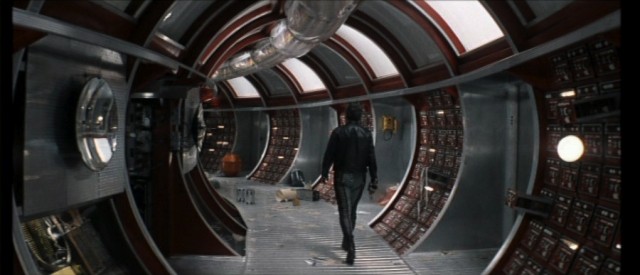
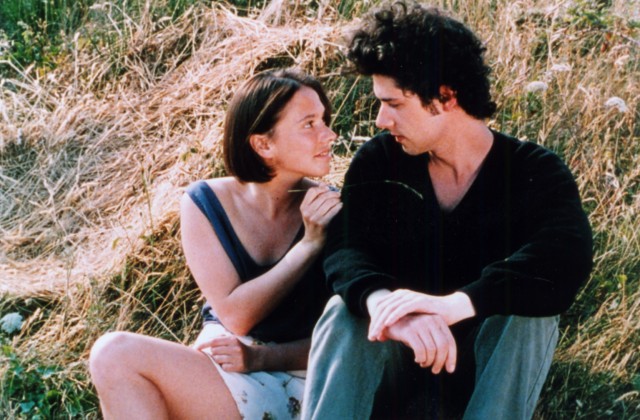

 A dinner party enters The Twilight Zone as a comet approaches and inexplicable things start happening in James Ward Byrkit’s inventive directorial debut, Coherence. Inspired by Ray Bradbury’s “The Monsters Are Due on Maple Street,” Christopher Nolan’s Inception, and other sci-fi classics (and reminiscent of Todd Berger’s 2012 underappreciated
A dinner party enters The Twilight Zone as a comet approaches and inexplicable things start happening in James Ward Byrkit’s inventive directorial debut, Coherence. Inspired by Ray Bradbury’s “The Monsters Are Due on Maple Street,” Christopher Nolan’s Inception, and other sci-fi classics (and reminiscent of Todd Berger’s 2012 underappreciated 
 For his third stage adaptation in ten years, following 1994’s Death and the Maiden and 2011’s Carnage, Roman Polanski has created a marvelous, multilayered examination of the intricate nature of storytelling, consumed with aspects of doubling. David Ives’s Tony-nominated play,
For his third stage adaptation in ten years, following 1994’s Death and the Maiden and 2011’s Carnage, Roman Polanski has created a marvelous, multilayered examination of the intricate nature of storytelling, consumed with aspects of doubling. David Ives’s Tony-nominated play, 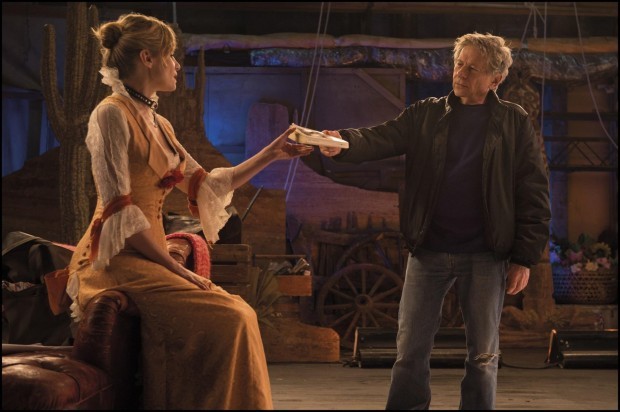

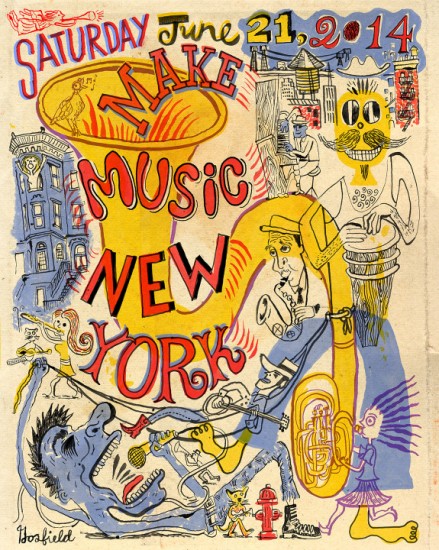
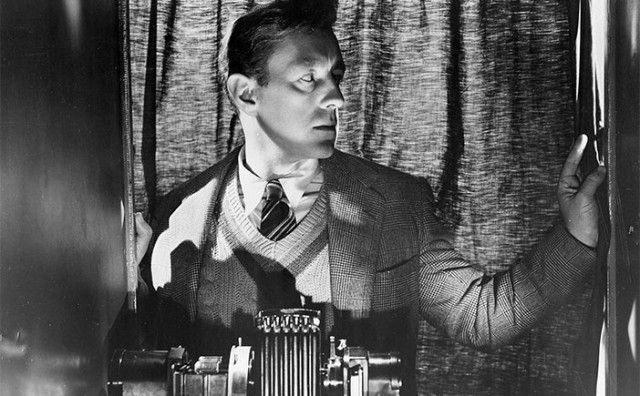
 Alexander Mackendrick’s splendid 1951 Ealing comedy The Man in the White Suit is a hysterical Marxist fantasy about corporations, unions, and the working man that doesn’t feel dated in the least. Alec Guinness stars as Sidney Stratton, a brilliant scientist relegated to lower-class jobs at textile mills while he works feverishly on a secret product that he believes will revolutionize the industry — and the world. After being fired by Michael Corland (Michael Gough) at one factory, Sid goes over to Birnley’s, run by Alan Birnley (Cecil Parker, whose voiceover narration begins and ends the film). As Sid develops his groundbreaking product, he also develops a liking for Birnley’s daughter, Daphne (Joan Greenwood), who is preparing to marry Corland. Meanwhile, tough-talking union leader Bertha (Vida Hope) also takes a shine to the absentminded chemist, who soon finds himself on the run, chased by just about everyone he’s ever met, not understanding why they all are so against him. Guinness is at his goofy best as Sid, a loner obsessed with the challenge he has set for himself; his makeshift, Rube Goldberg-like chemistry sets are a riot, bubbling over with silly noises like they’re in a cartoon. But at the heart of the film lies some fascinating insight on the nature of big business that is still relevant today. Nominated for an Oscar for Best Screenplay, The Man in the White Suit is an extremely witty film, expertly directed (and cowritten) by Mackendrick, who would go on to make such other great pictures as The Ladykillers and Sweet Smell of Success. It’s easy to imagine that if someone in a textile mill today came up with a similar invention as Stratton’s, the same arguments against it would arise, suppressing progress in favor of personal interest and preservation. The Man in the White Suit is being shown June 20-21 at Film Forum in a double feature with Charles Crichton’s delightful heist comedy The Lavender Hill Mob — both in 35mm restorations — as part of “Alec Guinness 100,” celebrating Sir Alec’s centennial with screenings of more than two dozen of his films, including The Bridge on the River Kwai, The Ladykillers, Our Man in Havana, Lawrence of Arabia, The Scapegoat, The Prisoner, and the 1997 Special Edition of Star Wars Episode IV: A New Hope.
Alexander Mackendrick’s splendid 1951 Ealing comedy The Man in the White Suit is a hysterical Marxist fantasy about corporations, unions, and the working man that doesn’t feel dated in the least. Alec Guinness stars as Sidney Stratton, a brilliant scientist relegated to lower-class jobs at textile mills while he works feverishly on a secret product that he believes will revolutionize the industry — and the world. After being fired by Michael Corland (Michael Gough) at one factory, Sid goes over to Birnley’s, run by Alan Birnley (Cecil Parker, whose voiceover narration begins and ends the film). As Sid develops his groundbreaking product, he also develops a liking for Birnley’s daughter, Daphne (Joan Greenwood), who is preparing to marry Corland. Meanwhile, tough-talking union leader Bertha (Vida Hope) also takes a shine to the absentminded chemist, who soon finds himself on the run, chased by just about everyone he’s ever met, not understanding why they all are so against him. Guinness is at his goofy best as Sid, a loner obsessed with the challenge he has set for himself; his makeshift, Rube Goldberg-like chemistry sets are a riot, bubbling over with silly noises like they’re in a cartoon. But at the heart of the film lies some fascinating insight on the nature of big business that is still relevant today. Nominated for an Oscar for Best Screenplay, The Man in the White Suit is an extremely witty film, expertly directed (and cowritten) by Mackendrick, who would go on to make such other great pictures as The Ladykillers and Sweet Smell of Success. It’s easy to imagine that if someone in a textile mill today came up with a similar invention as Stratton’s, the same arguments against it would arise, suppressing progress in favor of personal interest and preservation. The Man in the White Suit is being shown June 20-21 at Film Forum in a double feature with Charles Crichton’s delightful heist comedy The Lavender Hill Mob — both in 35mm restorations — as part of “Alec Guinness 100,” celebrating Sir Alec’s centennial with screenings of more than two dozen of his films, including The Bridge on the River Kwai, The Ladykillers, Our Man in Havana, Lawrence of Arabia, The Scapegoat, The Prisoner, and the 1997 Special Edition of Star Wars Episode IV: A New Hope.